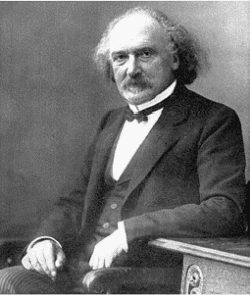Bénédict Morel (Bénédict Morel)

Bénédict Morel was born in Vienna, Austria in 1809, of French parents. In the aftermath of the War of the Sixth Coalition Morel was abandoned by his parents, and left with the Luxembourgish Abbé Dupont and his servant Marianne, who raised him. Morel received his education in Paris, and while a student, supplemented his income by teaching English and German classes. In 1839 he earned his medical doctorate, and two years later became an assistant to psychiatrist Jean-Pierre Falret (1794–1870) at the Salpêtrière in Paris. Morel’s interest in psychiatry was further enhanced in the mid-1840s when he visited several mental institutions throughout Europe. In 1848 he was appointed director of the Asile d’Aliénés de Maréville at Nancy. Here he introduced reforms towards the welfare of the mentally ill, in particular liberalization of restraining practices. At the Maréville asylum he studied the mentally handicapped, researching their family histories and investigating aspects such as poverty and childhood physical illnesses. In 1856 he was appointed director of the mental asylum at Saint-Yon in Rouen. Morel, influenced by various pre-Darwinian theories of evolution, particularly those that attributed a powerful role to acclimation, saw mental deficiency as the end stage of a process of mental deterioration. In the 1850s, Bénédict Morel developed a theory of “degeneration” in regards to mental problems that take place from early life to adulthood. In 1857 he published Traité des dégénérescences physiques, intellectuelles et morales de l’espèce humaine et des causes qui produisent ces variétés maladives, a treatise in which he explains the nature, causes, and indications of human degeneration. Morel looked for answers to mental illness in heredity, although later on he believed that alcohol and drug usage could also be important factors in the course of mental decline.
In the first volume of his Études cliniques (1852) Bénédict Morel used the term démence précoce in passing to describe the characteristics of a subset of young patients, and he employed the phrase more frequently in his textbook Traité des maladies mentales which was published in 1860. Morel used the term in a descriptive sense and not to define a specific and novel diagnostic category. It was applied as a means of setting apart a group of young men and women who were suffering from “stupor.” As such their condition was characterised by a certain torpor, enervation, and disorder of the will and was related to the diagnostic category of melancholia. His understanding of dementia was a traditional and distinctly non-modern one in the sense that he did not conceptualise it as irreversible state. While some have sought to interpret, if in a qualified fashion, Morel’s reference to démence précoce as amounting to the “discovery” of schizophrenia, others have argued convincingly that Morel’s descriptive use of the term should not be considered in any sense as a precursor to the German psychiatrist Emil Kraepelin’s dementia praecox disease concept. This is due to the fact that their concepts of dementia differed significantly from each other, with Kraepelin employing the more modern sense of the word, and also that Morel was not describing a diagnostic category. Indeed, until the advent of Arnold Pick and Kraepelin, Morel’s term had vanished without a trace and there is little evidence to suggest that either Pick or indeed Kraepelin were even aware of Morel’s use of the term until long after they had published their own disease concepts bearing the same name.[8] As Eugène Minkowski succinctly stated, ‘An abyss separates Morel’s démence précoce from that of Kraepelin.’
Born
- November, 22, 1809
- Vienna, Austria
Died
- March, 30, 1873
- Saint-Yon, France

